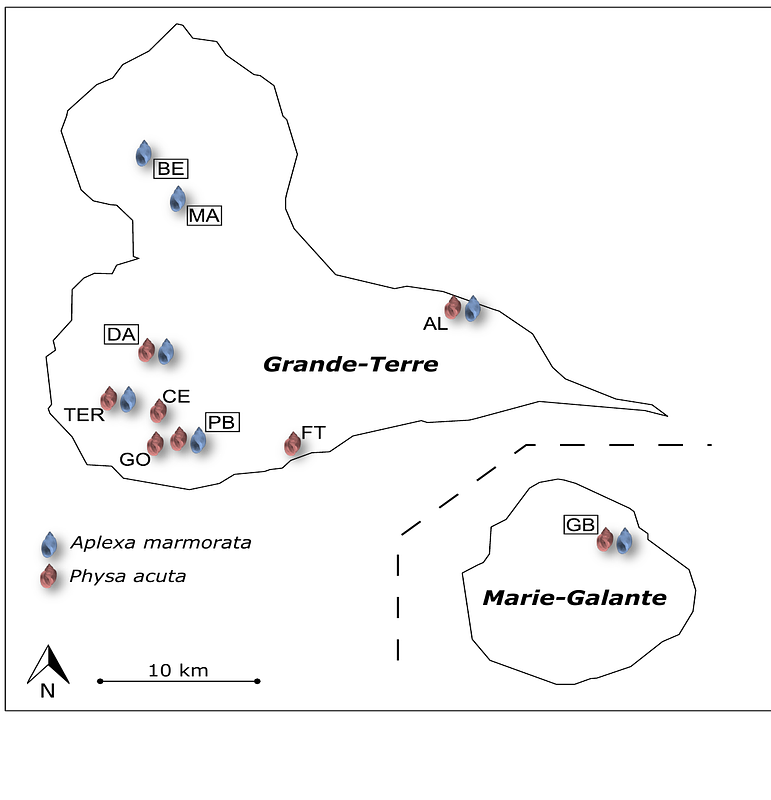Rapid life-history evolution reinforces competitive asymmetry between invasive and resident species

Rapid life-history evolution reinforces competitive asymmetry between invasive and resident species
Chapuis, E.; Jarne, P.; David, P.
AbstractBiological invasions by phylogenetically and ecologically similar competitors pose an evolutionary challenge to native species. Cases of character displacement following invasions suggest that they often respond to this challenge by shifting their traits. However, the actual impact of such shifts on competition are seldom studied. Here, we study competition between two freshwater snails from Guadeloupe (French Antilles), the native Aplexa marmorata and the introduced Physa acuta; the former has responded to invasion by rapid life-history evolution towards an apparently more colonization- and less competition-oriented syndrome. We observe negative impacts of both species on each other, though P. acuta is dominant and over generations largely displaces A. marmorata from co-cultures. In addition, A. marmorata populations having experienced competition by P. acuta for sufficient time in nature, have evolved to become even less tolerant to it. Though apparently paradoxical, this result supports the hypothesis that rapid life-history evolution has allowed this species not to resist competition, but to avoid it by specializing into a colonizer lifestyle. This example illustrates how evolution, in accordance with metacommunity coexistence theory, sometimes takes other ways than specialization into distinct types of resource or habitats to ensure coexistence between related species inhabiting the same landscape.